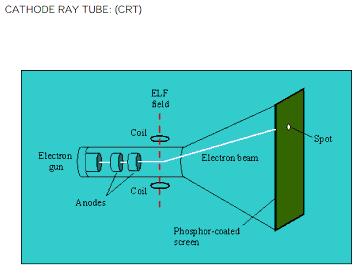Visual Display System
Visual Display System :
The primary user interface hardware for displaying these visual media like text, image, graphics,video, and animation is a visual display system. The visual display system contains following three components ,
(i) Monitor, where we view the visual media and the final presentation.
(ii) Video adapter card, an expansion card serving as an interface between the processor and the monitor.
(iii) Video adapter cable, which connects and transmits signals between the adapter card and the monitor.
Monochrome Cathode Ray Tube:
The most common type of monitor used with the multimedia desktop system is based on picture tube called the cathode ray tube (CRT). It is essentially a vacuum sealed glass containing two electrodes, the cathode or negative electrode and the anode or positive electrode. The front face of the tube is coated with a chemical compound called phosphor arranged in the form of rectangular grid of a large number of dots. The material phosphor has a property of emitting glow of light when it is hit by charged particles like electrons. The phosphor dots called pixels, sort for picture elements are responsible for producing an image on the monitor. Other positive electrodes called grids (G1, G2,and G3) are located near the cathode. Near the neck of the CRT are two coils of wire known as the deflection coils. Electron E− beams generated from the cathode are made to hit the phosphor dots generating spots of light and thereby producing the image.
Color Cathode Ray Tube:

